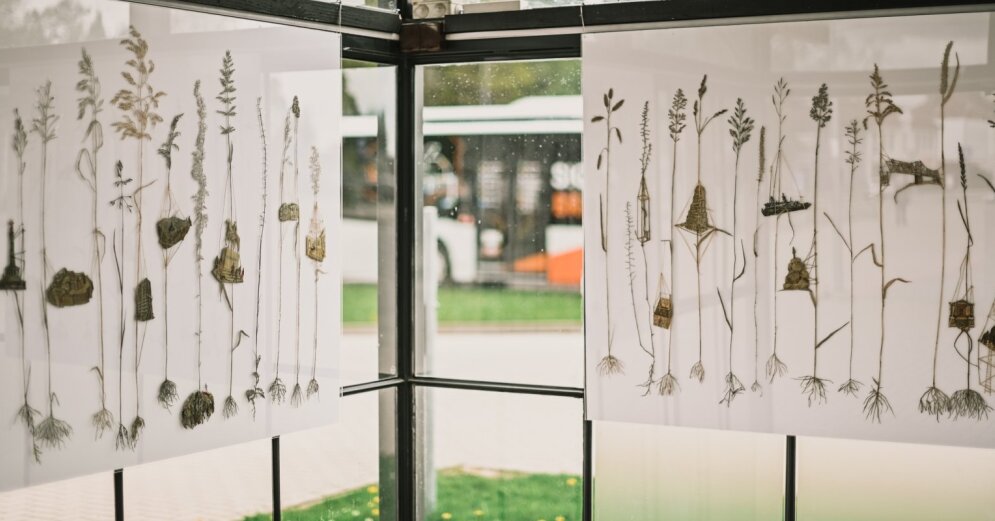Melisa Pereyra is a gynecologist by profession, but a communicator by vocation. Breaks it into networks like Gynecoline with almost 800,000 followers, raising awareness and informing about gynecology in ATP language. Pereyra speaks openly and with a gender perspective to the Vaginnials both from the networks and from his brand new book that is already a bestseller, “V. Science for an intimate geography without myths “. “What I try to communicate is that it does not matter the sex, religion, culture or time in which we are living, we all go through the same moments in gynecology, it can happen to all of us at some point in life something from the pathological, oncological, infectious, physiological level and even, from what was never spoken. These are issues that can and should be treated naturally because it is something that we all see and the doctor is not going to be surprised “, he tells elDiarioAR.
How did you decide to start an account where you can talk about gynecology, sexuality and gender issues on Instagram?
I am thirty-five years old, I am a doctor graduated from the University of Buenos Aires, my specialty is tocogynec, gynecology and obstetrics. I did it at the César Milstein Healthcare Unit (which is the former French Hospital) and at the Santojanni Hospital. In 2017 I finished the residency, the medical specialty and during these four years I faced a lot of situations that surprised me, I was unaware of the lack of information that women had about issues that one perhaps as a professional considers already known or basic. It did not matter the age, socioeconomic or educational level, there was a lot of knowledge that we should know about our body, its physiological and biological processes, and in the face of this ignorance, I saw that patients with advanced pathologies arrived that out of shame or ignorance of alarm guidelines; So that’s where I said well, maybe take advantage of this social network that I also had on my cell phone, and just as you see fashion, you see different tips for body care, talk about things that perhaps in a few minutes one generates content that at reading it can bring you something useful.
Let’s say that your period of residence was very nutritious in terms of understanding problems that the patient had and improving your care as a doctor.
Yes, also during this specialty, not only did I face ignorance of basic concepts, but also aspects that women have to be able to handle (such as the menstrual cycle, the care of their vaginal environment, the different types of vaginal infections, infections sexually transmitted). I saw a lot of unplanned pregnancies, so you say “well what’s up?” They do not have access to contraceptive methods, they do not know the types of contraceptive methods, I clearly saw a shortcoming both at the social educational level and also at the health system level, which is what we as health professionals contribute to the patient. Although we are here to solve pathologies, make diagnoses, treatments, I believe that one of the main tools that we have at our disposal is primary prevention, and I saw that we were quite limited in that.
The interesting thing about your account is that you were cultivating a style that until then was not seen much, at least in Argentine accounts of medical professionals, to speak in a serious but uncontracted and didactic way of “sensitive” topics, or to which people either due to cultural bias or their own prejudice, they did not agree or were encouraged to discuss (men and women).
With regard to the manner and style, the idea was to bring a human health professional, woman, it is also to put my body, my fluids when I speak of menstruation, it is to bring health closer to a concrete, real field, beyond image of the doctor behind a desk with the overalls. The main objective is to generate empathy, so that they know that on the other side there may be listening, beyond the fact that I am a professional woman, I believe that the man may also be listening, he may be receiving the message. It is also very difficult in gynecology, since sometimes the patient sits in the office and out of fear or embarrassment, for different reasons, does not express the specific problem for which she came to consult, the controls are done and she is left with a thousand questions. I always say that silence also makes you ill in the long term, so the idea is that they can talk naturally about what happens to them, that they are not going to be judged and that it happens to all of us.
Many of your contents are also oriented, in a more or less initiatory way depending on the case, to recognize oneself and her corporality, as we still live quite dissociated from our biological reality, from our sexuality …
The person should not be hiding information or avoiding controls for something, out of shame. The fact of seeing your own genitality is also essential to be able to identify certain pathologies, that is why it is also the invitation to look at your body, to show vulvas, to show vaginas, to show mothers, nipples, so that they can see the anatomical diversity that it exists and we stop generating shame in our body because we perhaps see what is in the media that are ideal images in quotation marks. With regard to the body, the ideal is the body of each one.
At the beginning it must have been shocking for many, especially from the medical or academic community, what do you feel is the most difficult thing about this process of finding your voice in networks and your audience?
Regarding the difficulty, especially in the medical and social community, perhaps my style at the beginning and to this day is something that sometimes shocks or generates a little discomfort, because we have been behind on a sociocultural level for years. Sometimes showing the natural female body and its fluids, its shape, its colors, is shocking for many people. We need to reach the community through social networks, I am not making a presentation at a congress, a dissertation in a medical community, I am providing a message to society. And society needs clear, short and concrete messages that are real, so that way of communicating at first cost a bit, but today the medical community is adhering one hundred percent to this of social networks. Professionals are created, they show their activity, how they develop their attention, so I celebrate that and beyond the fact that there were colleagues who joined and others who did not, it is now quite accepted. I do not know if the way, because I have my way of communicating, but the fact of speaking and showing oneself on social networks to invite the patient to monitor their health.
What are the five topics that had the most impact or the ones that you felt the most echoed by the IG community as taboo or not so discussed topics?
The issues that had the most impact, I think number one is menstruation, is to talk about our menstrual cycle, that no woman is exempt, since at some stage of life she is going to menstruate, see menstrual bleeding, etc. Another topic is the use of menstrual management elements, the freedom that women should have to know the menstrual management elements and choose the one that best suits her; And something that was like trending is the use of the menstrual cup, which, invited to this third topic, I would put it, which is the rediscovery of our genitality, of looking at the vulva in front of a mirror, of walking it with the fingers in the vagina , to see its curvature and texture. In position number four I would put the topic of sexually transmitted infections, which would also put it at number one, but hey, it is difficult to start talking about sexually transmitted infections, how the lesions look. And the last topic in a top 5 is that of unplanned pregnancies, of contraceptive methods. You think that everyone knows the methods that exist and the truth is that there is a lot of misinformation. Sometimes I think that I am always repeating the same thing and there are always people who are learning.
How do you think the idea that people have of gynecology changed thanks to the power of the networks to bring information, raise awareness, open debates or reinforce practices?
I believe that thanks to Gineco online gynecology is being seen in a different way, in a much friendlier, more empathetic way, in a way of speaking with greater freedom about our way of living sexuality, our body, our discomforts. Sometimes a patient comes and tells me “well, I really don’t feel good about this situation” and many times one goes to a doctor because he says this is like that, period and if you don’t like it, well that’s what I touched you , and many things can be discussed. I think that the biggest message that the account leaves is “I can talk about my body with total freedom and I know that they will listen to me.” It is a paradigm shift in medical care in terms of gynecology, which is a specialty that has always been quite reserved, and I believe that it is the gateway to talking about a lot of things and being able to diagnose even pathologies of other specialties . To jointly carry out interdisciplinary care, which is the main objective of medicine, to attend to the patient in a comprehensive way.
Finally, what was the driving force behind your new book “V. Science for an intimate geography without myths ”(which is already one of the best-selling Planet titles this year) and the reception at the moment?
The objective of what I wrote is that the woman can have a guide of what happens to her as she advances in life, from birth, childhood, puberty, the development of the menstrual cycle, the childbearing age, the contraceptive methods , sexually transmitted infections and menstrual management, perimenopause and menopause. Basic concepts that this reading does is to be able to identify as a person, as a woman, what is happening to her in order to understand what happened to her and what is going to happen to her. The goal is that it can be read by a woman, that a girl or adolescent can read it, that it can be passed on from generation to generation. In one of the releases we talked about a generation that was the vagginnials, that it was a timeless generation, because here there are no ages to learn, here you learn at all ages. It had a beautiful impact, it came out in December of last year, we are already in the third edition and I am also about to write another book.
– .


